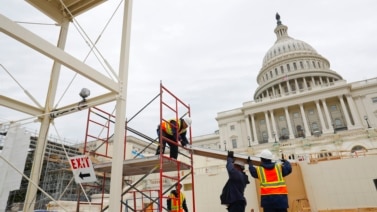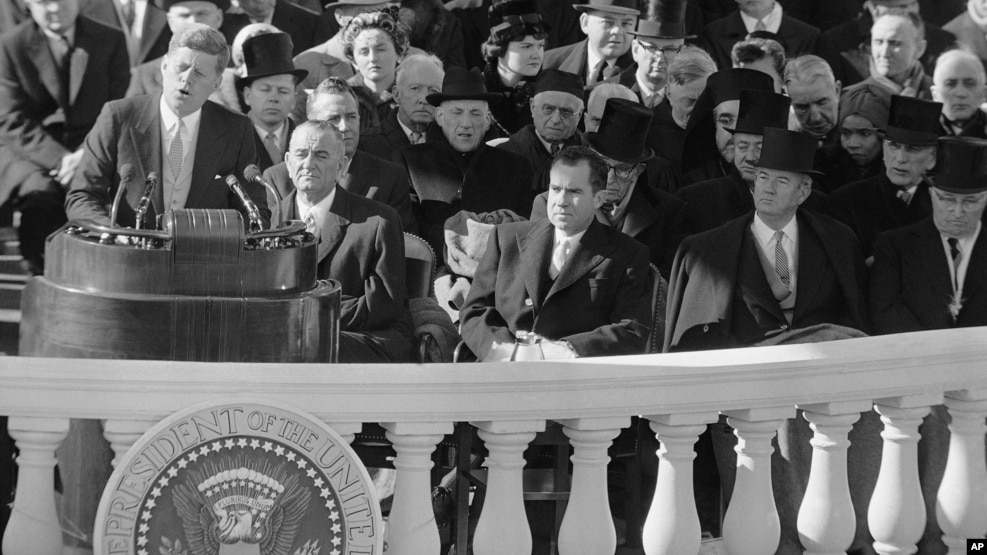
Washington, 1789
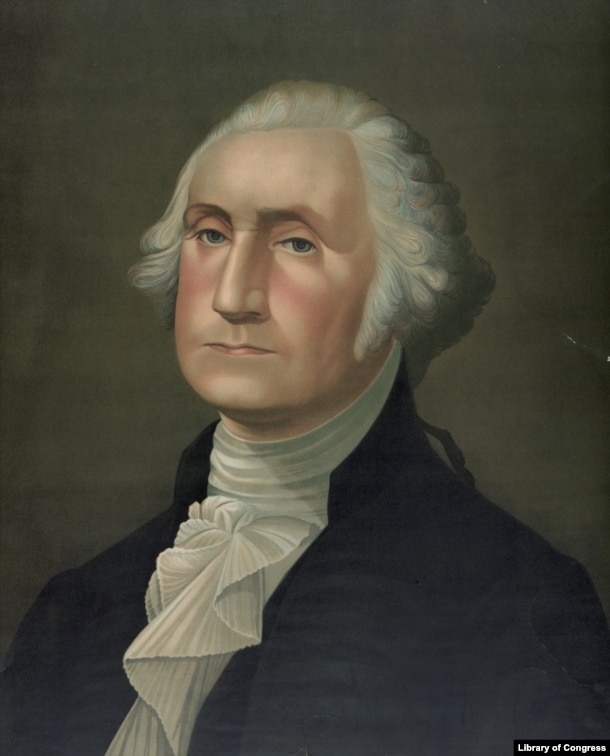
The first U.S. president, George Washington, was inaugurated in New York City. At the time, New York was the temporary capital of the country.
Because Americans had never had a president before, George Washington had to wait a week before lawmakers could agree on what an inauguration ceremony should look like.
Finally, on April 30, the president- and vice president-to-be, along with other lawmakers, gathered at the senate building. They walked to the balcony and waved at the crowd.
Then, a judge asked Washington to swear to “faithfully execute the Office of President of the United States.” Those are the words the U.S. Constitution requires.
The judge wanted Washington to swear on a Bible. But at the last minute, the judge realized he did not have one. A messenger had to find and borrow one quickly.
After the oath, Washington read a speech to the senators. One of those senators described the scene in his diary. William Maclay wrote that Washington appeared nervous and uncomfortable. Washington trembled and had difficulty reading his speech.
The ceremony was short, sweet, and - according to Maclay - awkward.
Jefferson, 1801
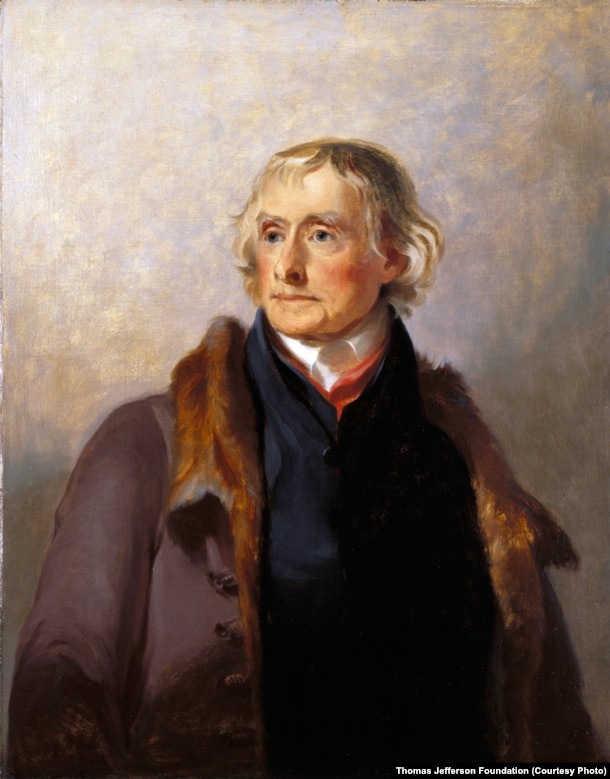
Thomas Jefferson, the third president, had an inauguration that was reportedly even simpler. He walked to the ceremony instead being driven in a carriage, as the first two presidents had done.
When Jefferson arrived at the Capitol, a large crowd met him. The president-elect had prepared a speech. But when Jefferson gave it, his voice was so soft that few people heard him.
Today, Jefferson's first inaugural speech is well-known among Americans. It is famous for trying to ease the ugly dispute between political parties during the campaign.
But apparently the bitter taste of the election remained. Jefferson's rival in the election - former president John Adams - did not attend the inauguration. In the dark hours just before the ceremony, Adams packed his bags, quit the White House, and took a coach back to Boston.
William Henry Harrison, 1841
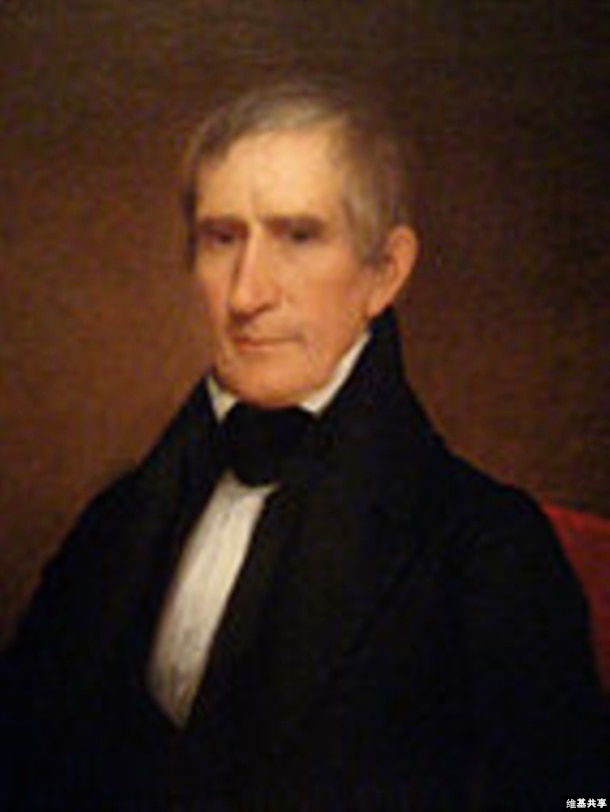
No history of presidential inaugurations would be complete without noting William Henry Harrison, the country's ninth president.
At 68, Harrison was the oldest person to take office at the time. On his Inauguration Day, he reportedly wanted to show that he was strong enough to serve as president by delivering a very, very long speech. It was a cold day, and Harrison did not wear a coat or hat.
One month later, Harrison died - the first president to die in office. His doctor recorded that Harrison died of pneumonia. The usual story is that his long speech killed him.
But researchers reviewed Harrison's case and in 2014 proposed a different reason for his death. Jane McHugh and Philip Mackowiak say Harrison did not get sick until three weeks after his inauguration. And he complained of being tired and anxious, not of pain in his lungs.
The researchers point out that, at the time, Washington, DC did not have a good sewer system. Human waste “simply flowed onto public grounds a short distance from the White House,” they wrote in the New York Times.
Some of the bacteria probably entered the president's pipes - so to speak. The researchers conclude that Harrison probably died from drinking dirty water.
Calvin Coolidge, 1923
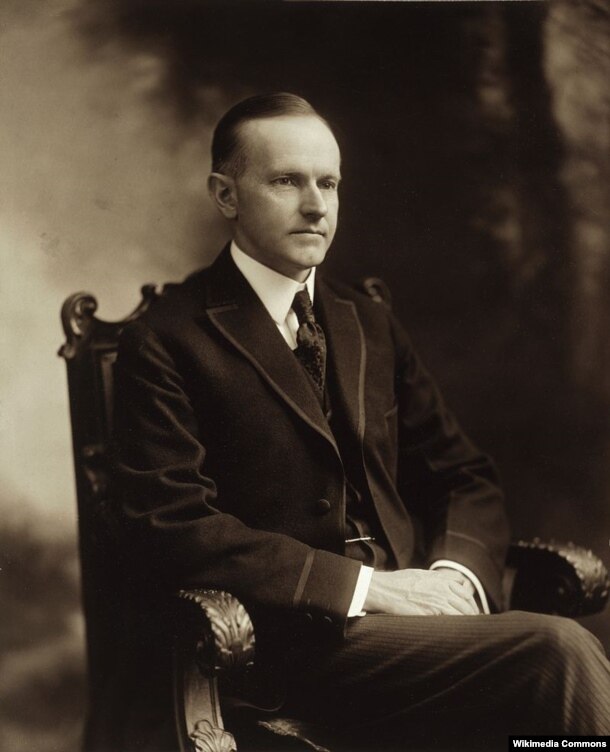
Not all presidents have memorable inaugurations. But the inauguration of Calvin Coolidge, the 30th president, is notable for being the least memorable.
In August of 1923, Coolidge was the vice president. He did not have many duties and went on vacation at his family's house in Vermont.
In the middle of the night, his father woke him up with a telegram. It said that the president, Warren Harding, had died. Coolidge was now president.
Coolidge wrote in his diary that his first act was to stop and pray. Then he found the text of the inaugural oath from the Constitution. He gave it to his father. Mr. Coolidge Senior administered the oath in the family's living room, by the light of a kerosene lamp.
Within half an hour, the new president was back in bed.
Lyndon Johnson, 1963
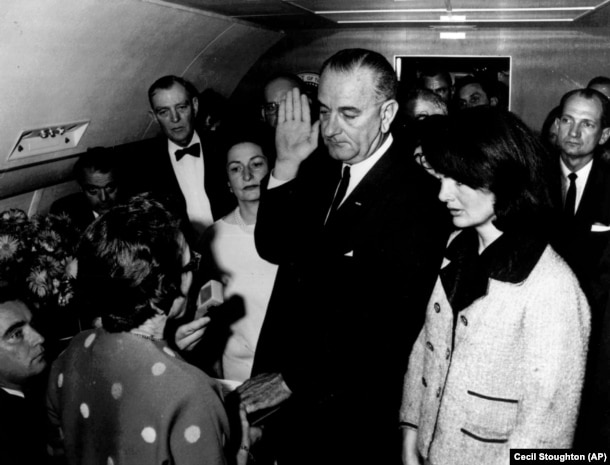
In contrast, most American's can call to mind the dramatic, emotional inauguration of Lyndon Johnson, the 36th president, an hour and a half after John F. Kennedy's death.
The event is captured in an iconic image of Johnson on the president's plane, Air Force One. Johnson is raising his hand as he takes the oath of office. His wife is on one side. Jackie Kennedy, the former president's widow, stands at his other.
The judge administering the oath is also a woman - she is the first and only female judge to swear in a U.S. president.
The image is famous because it shows the shock on Mrs. Kennedy's face. She still has on the suit she was wearing when her husband was shot.
The image also provided proof to the American people that a new president had been sworn in. It promised that even in moments of chaos, the U.S. government continued.
And, finally, inaugurations gone wrong
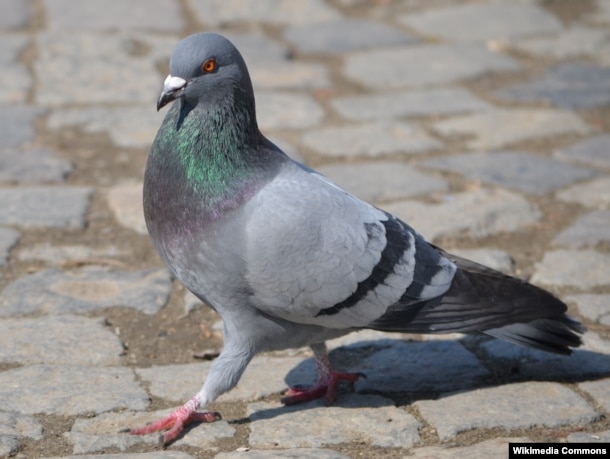
But that is not to say that the U.S. government always operates smoothly. Many inaugurations go wrong.
After Andrew Jackson's inauguration in 1829, supporters at the White House were so eager to shake the new president's hand that they almost crushed him against a wall. Jackson had to leave his own party by escaping out a window.
In 1865, another Andrew, Andrew Johnson, delivered his vice presidential speech drunk. In his defense, he was sick; he had been using whiskey as medicine.
Ulysses S. Grant in 1873 wanted live birds at his inaugural ball. Unfortunately, the day was very cold. The birds froze to death.
Similarly, in 1973, Richard Nixon aimed to clear pigeons from the path of the inaugural parade by spraying chemicals. He succeeded … sort of. On Inauguration Day, the crowd had to step over the bodies of the dead birds all along Pennsylvania Avenue.
I'm Kelly Jean Kelly.
And I'm Anne Ball.
Words in this Story
diary - n. a book in which you write down your personal experiences and thoughts each day
bitter - adj. felt or experienced in a strong and unpleasant way
pneumonia - n. a serious disease that affects the lungs and makes it difficult to breathe
sewer - n. a pipe that is usually underground and that is used to carry off water and sewage
kerosene - n. a type of oil that is burned as a fuel -- often used before another noun
iconic - adj. a widely known symbol
